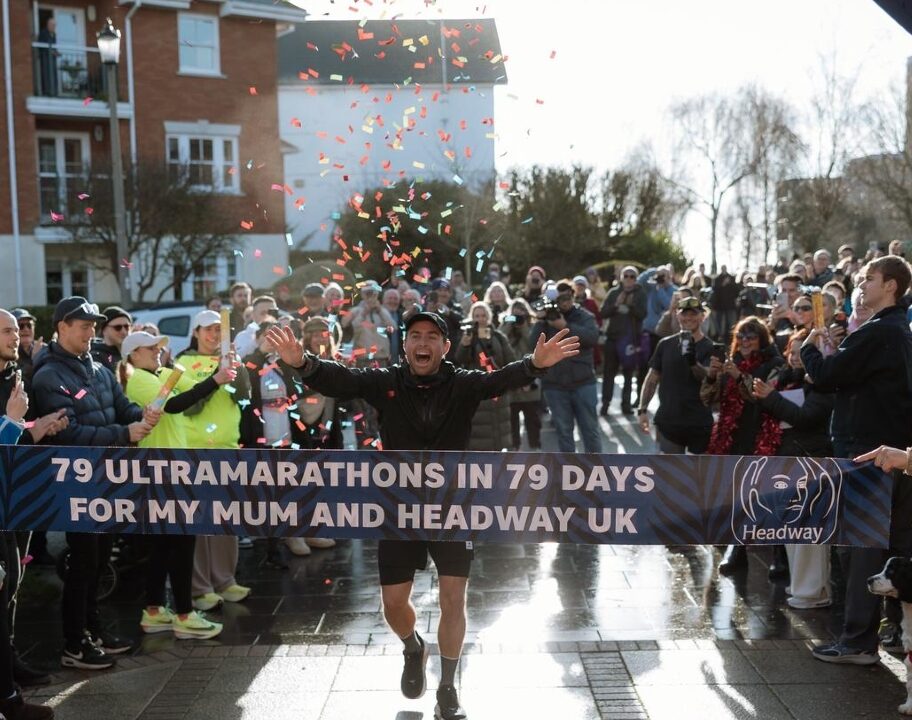People often say that running is as much a mental game as it is a test of physical endurance. As the distance increases, so does the time you spend with your thoughts. It is your mind that tells you your body is tired, and it is your mind that can help you push further than you ever thought imaginable. In backyard ultras and 24-hour running events, mental resilience is as important as fitness, for these events push runners to their limits. Some people even describe them as a journey of transcendence.
Over the last few years, backyard ultras and 24-hour running events have gained increasing popularity, with events all over the world. But before you go signing up to one, let’s find out exactly what’s required…
What is a backyard ultra?
A backyard ultra consists of a looped course, typically of 6706m (4.167 miles). Competitors must finish each loop in less than an hour, or by the time the bell rings. There is no predefined total distance or time; the race finishes when there’s just one person left standing.

The concept of a Backyard Ultra was created in Tennessee, in 2011, by endurance race designer Gary ‘Lazarus Lake’ Cantrell, the man behind the infamous Barkley Marathons, one of the world’s toughest races.
While 100 mile races aren’t a new concept, running in circles to a strict time limit adds another layer of difficulty, and many say completing races of this kind comes down to mental resilience.
Backyard Ultra running records
The current record for running the Big Dog Backyard Ultra is held by Harvey Lewis, a seasoned American ultra runner, who completed 450 miles in 108 hours in 2023.
The women’s backyard ultra record is currently held by 57-year-old Jennifer Russo, from Ohio, who ran 300 miles in 72 hours (74 laps), at the Capital Backyard Ultra in Lorton, Virginia, in 2023, beating international trail running superstar Courtney Dauwalter’s record by 68 yards, set in 2020. Although some say Russo’s record won’t be ratified as the course was not USATF-certified.
Earlier this year (March, 2024), ultra runner Sarah Perry set a new British backyard ultra record at the Rasselbock Running ultra marathon, in the midlands, completing 170 miles in 41 hours (41 laps).
24-hour races vs a backyard ultra: what’s the difference?
24-hour ultra races differ from backyard ultras because there is no hourly time limit on each loop but rather a 24-hour cut off. Competitors will still run around a set loop course but the winner is the person who completes the most laps over 24 hours. That said, for many it isn’t about covering as much distance as possible but making it through to the end – even if they’re walking.
One of the biggest long standing races of this kind in the UK is the Self Transcendence 24 Hour Track Race, which has taken place annually at a south London track (previously Tooting track, now Battersea track), every September, since 1989. The record is currently held by Norbert Milhalik, who ran 161 miles, the equivalent of 648 laps, in 2017.
Another popular 24-hour event in the UK is Endure24. With two annual races, in Reading and Leeds, Endure24 was once described as the ‘Glastonbury for runners’. While the concept is still the same – run an 8km looped route for 24 hours – the race organisers have worked hard to make sure this is an inclusive and supportive event for everyone. It also takes place on country trails, which is a little more interesting than a track!

The race is open to both solo participants and teams of up to 12, which means competitors can run as little or as much as they wish. This year, founder of Black Girls do Run, Tasha Thompson, will be taking her team of 12 women to the start line, to take part in the race relay style – they will each do two loops. She says the biggest challenge will be staying awake but they’re all really looking forward to being able to run it as a team.
Endure24 attracts a huge number of participants and supporters. Last year, there were 5000 runners and 2000 supporters, which brings an incredible atmosphere to events like this, when community and camaraderie are so important in getting everyone to the finish line.
An accessible way to take up ultra running – the reason behind the rising popularity of 24-hour running events
The men’s record at Endure24 is currently held by Joe Baker, who has completed 28 laps at Reading and 30 laps at Leeds. The Reading female record of 26 laps is held by Erika Trevblance and Kate Bennett holds the Leeds record with 23 laps.
Like many runners, Joe has been captured by this style of ultra running, and has participated in ten 24-hour events, so far. So what is is about this format that keeps him coming back for more? “24-hour events give people a chance to see how far they can go; how far they can push themselves.” says Joe.
“I think they’re becoming so popular because they’re a great way to get into ultra running. The short loop means you don’t need to carry a lot of kit and are never too far from your nutrition, liquids, and support crew. You have a base.” Joe now has his sights on the 2024 Leeds race, where he hopes to beat his record of 30 laps.
Tempted to join the 24-hour run movement? Check out our training tips to help you prepare for your first 24-hour ultra event.






